Project News ·
Positive relationships lead to improved water quality
Since 2020, over 300 growers have improved farming practices to reduce DIN losses through the Lower Herbert Water Quality Program.
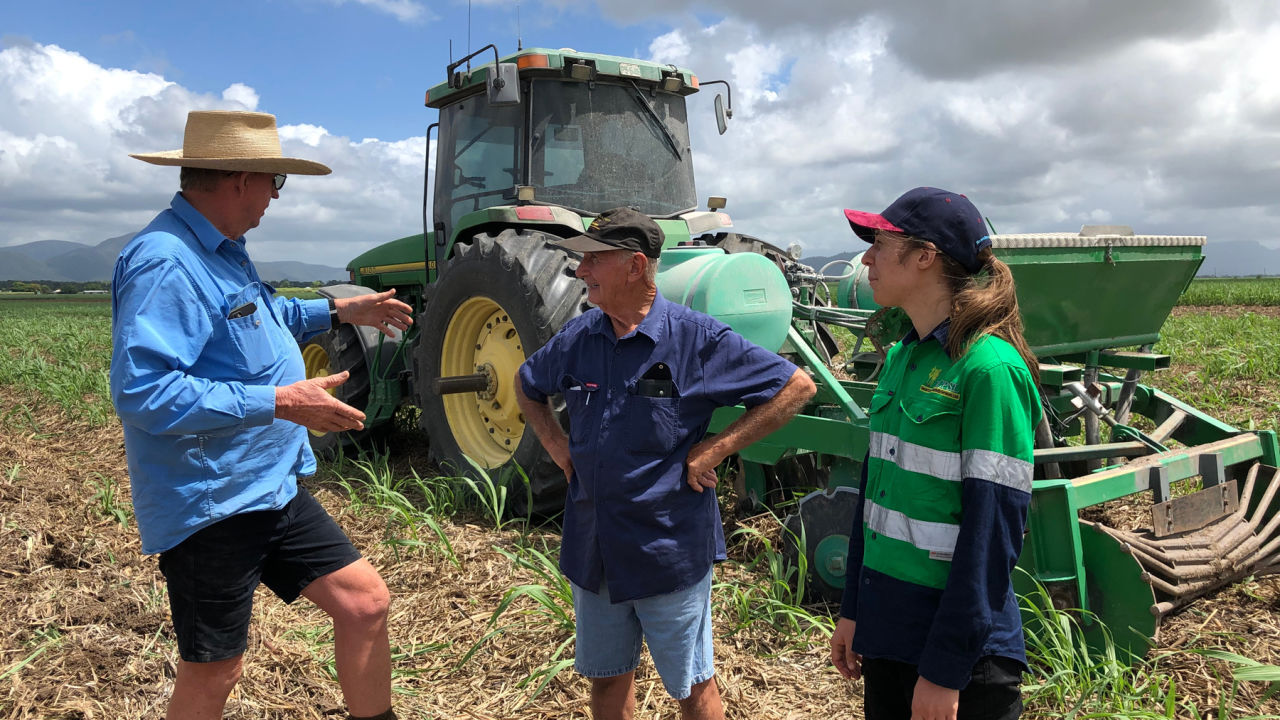
Positive relationships, regional coordination and local on-ground support have driven management practice changes for improved water quality in the Lower Herbert and improved health of the Great Barrier Reef.
The Herbert is one of the highest priority river catchments for the reduction of dissolved inorganic nitrogen losses in the Reef 2050 plan. Responding to this challenge, the $16.2 million Lower Herbert Water Quality Program (LHWQP) was established and funded by the partnership between the Australian Government’s Reef Trust and the Great Barrier Reef Foundation.
The LHWQP provides regional coordination support through Canegrowers Herbert River who is working with a range of funded local delivery providers to support sugarcane farmers to increase understanding of farm management practices that improve the productivity, profitability, and sustainability of their farms.
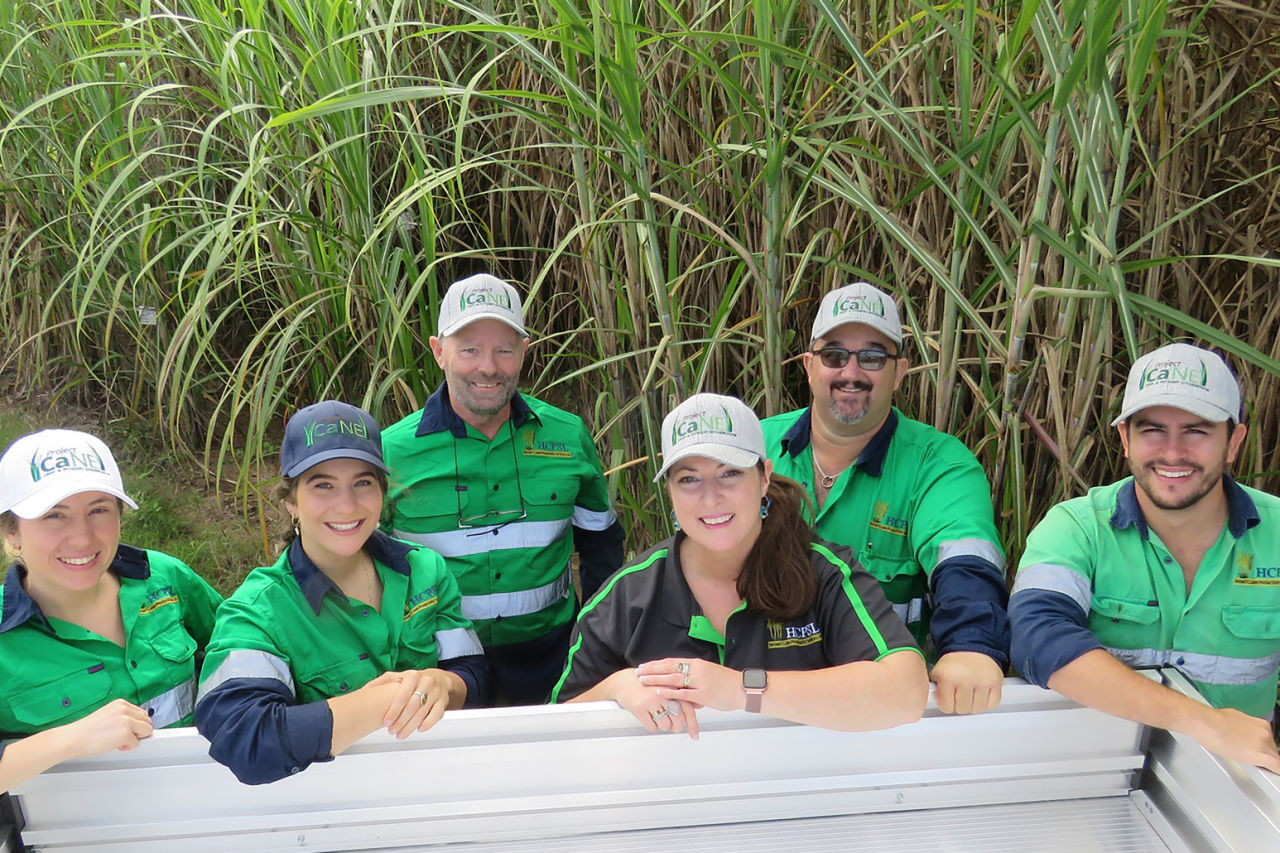
HCPSL extension team L-R Ellie McVeigh, Rhiannon Harragon, Rod Neilson, Melissa Royle, Adam Royle, Jarrod Sartor. Credit: HCPSL
Program Coordinator for the LHWQP, Ingham based Carola Bradshaw said having a regional coordinator working on-ground also helps to deliver community and stakeholder engagement at a program level.
“It is important to have a local bridge between delivery providers, growers, and policy organisations. Building trust and relationships in the region has proven to be the key to success.”
“Programs like the LHWQP can only succeed through local on-ground support from experienced and knowledgeable extension officers working alongside growers they trust and want to collaborate with to adopt new practice changes,” she said.
Established and trusted delivery providers in the Herbert district received funding to support sugarcane farmers to better manage their farm nutrient inputs to best suit their crop needs and reduce nitrogen losses as runoff. These include, Agro Group, Catchment Solutions, Herbert Cane Productivity Services Limited, LiquaForce and Canegrowers Herbert River.
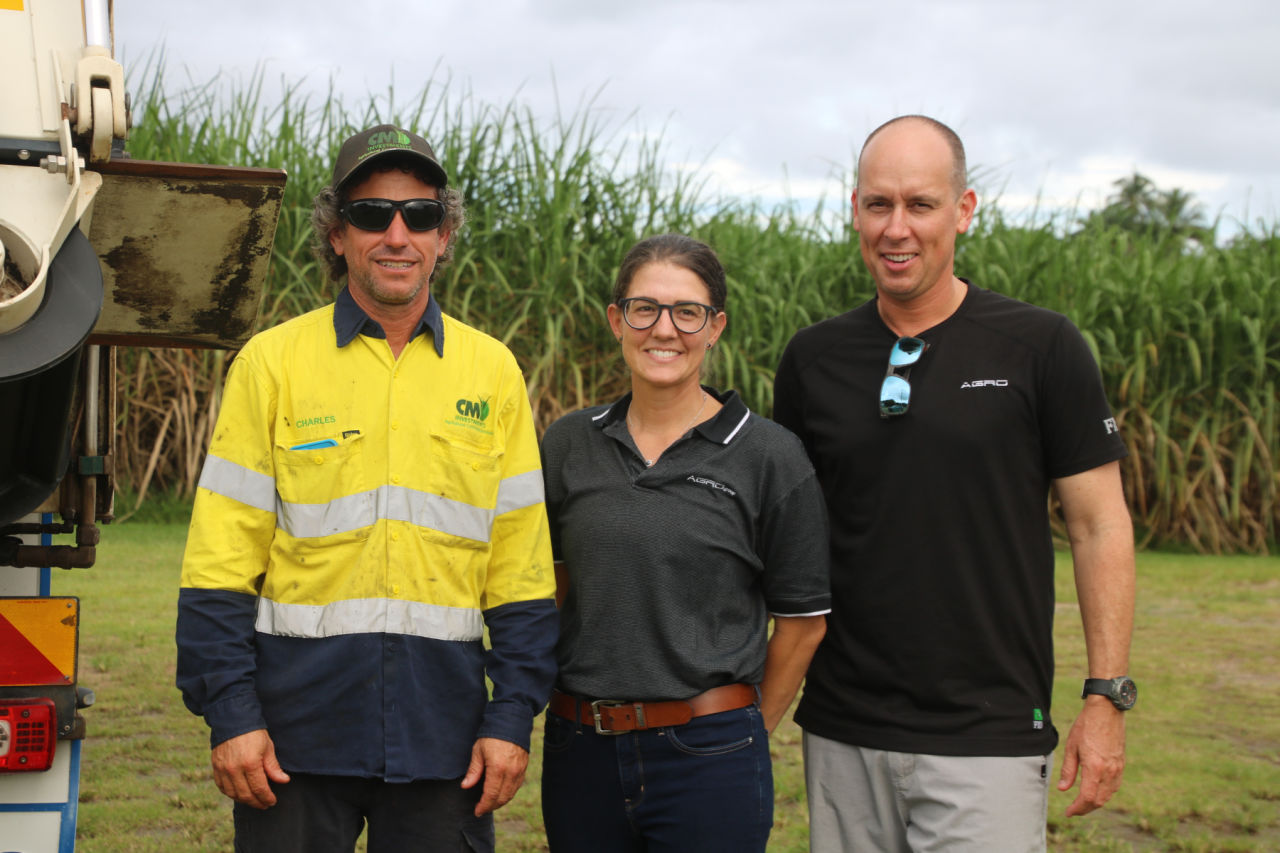
Grower Charles Girgenti with AgroGroup's Kristen and Regan Kirknie. Credit: CJ James
Since 2020, over 300 growers in the Lower Herbert district have adjusted their farming practices, increased their knowledge of modern technologies and equipment, and gained assistance from industry experts and leaders to improve their nutrient management plans and budgets through greater innovation, integration, and collaboration across the range of projects. These approaches are contributing towards the program's nutrient reduction target of preventing 140 tonnes of dissolved organic nutrient from entering local waterways and the great Barrer Reef lagoon each year.
"While important, it is not just about meeting program targets though; it is also about being passionate about the sugar industry and the fact that all delivery providers and growers are working together for a stronger future,” said Mrs Bradshaw.
LiquaForce developed a Local Area Nutrient Datahub (LANDHub) to deliver a shift in the level of actionable insight and accessibility of key agronomic information for growers of all levels of digital maturity. The project produces optimal Six Easy Steps nutrient management plans tailored to the region and specific farms, paddock, and soil lab data inputs. It also provides secure, private, digital storage for all farm, soil, and production data.
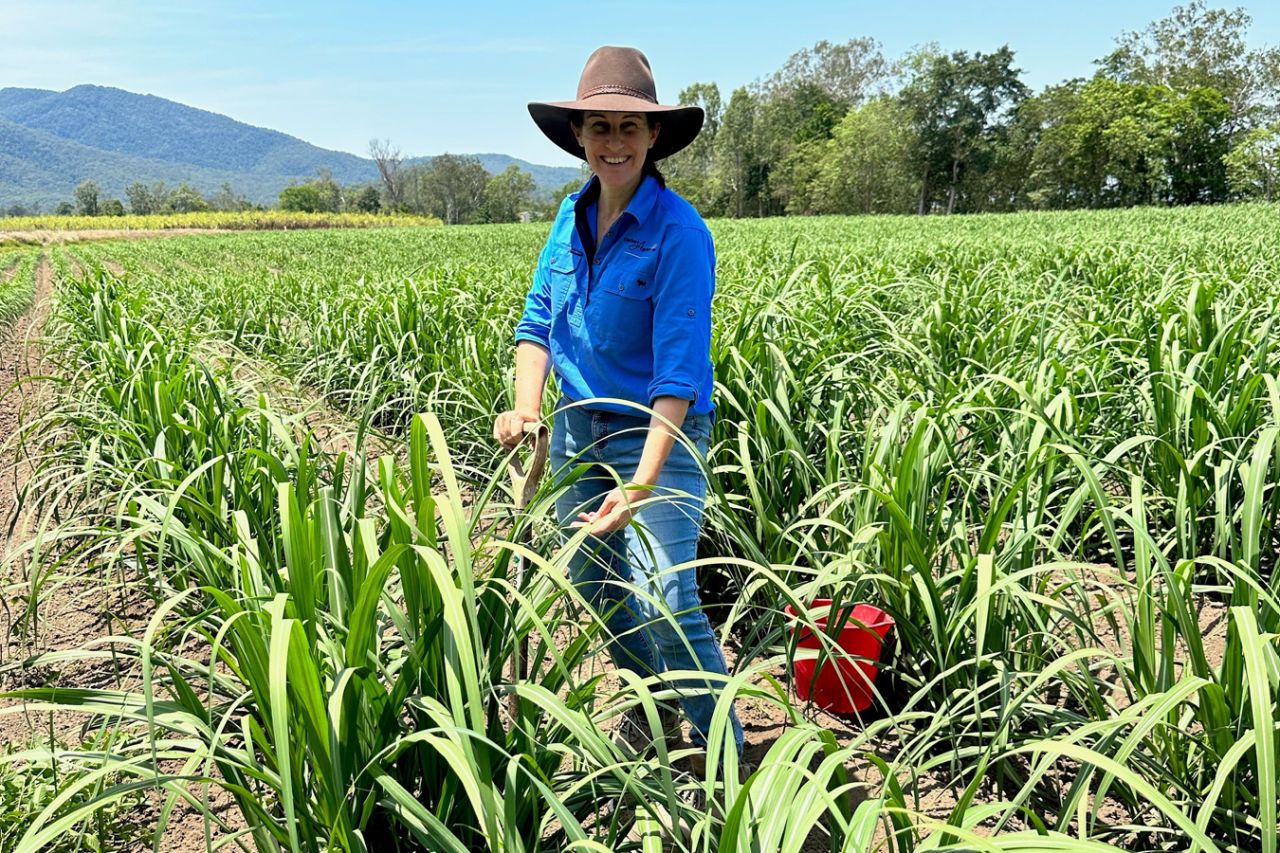
Extension agronomist from Herbert AgriServices and LANDHub Leanne Carr said that growers go the extra mile to make a difference. Credit: Herbert Agriservices
Extension agronomist from Herbert AgriServices and LANDHub Leanne Carr said that growers go the extra mile to make a difference and having an extension officer helping them every step of the way ensures they are meeting and exceeding program targets.
“The role of an extension officer is to build relationships with farmers, to share science, knowledge and ideas and work through the challenges, aiming to drive on-farm profitability and sustainability through enhanced understanding and improved decision-making,” said Ms Carr.
Cameron Liddle, owner of LiquaForce and LANDHub also emphasised that a greater level of on-ground extension is required due to rapidly changing technological and increased legislative environment in agriculture.
Fourth generation Herbert grower Robert Lyon said by industry working together to identify what is coming off-farm and potentiality going to the reef shows that we are concerned and proactive in managing change.
“We have to prevent chemicals moving into waterways so we as an industry can show the rest of the world that we are not destroying everything,” said Mr Lyon.
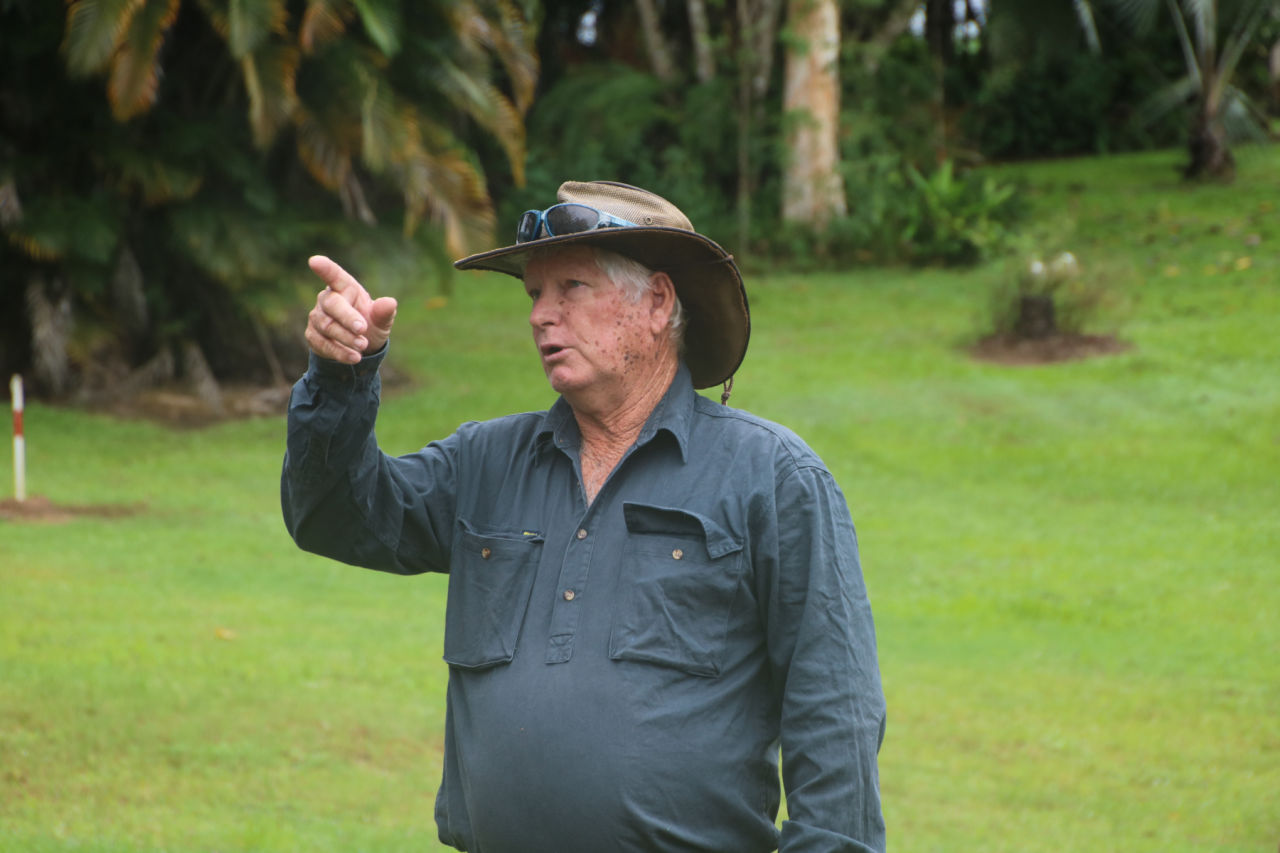
Abergowrie sugarcane grower Robert Lyons. Credit: CJ James
AgroGroup Directors Kristen and Regan Kernke developed two mill mud spinner trucks designed to reduce mill mud application rates and enable accurate, consistent mill mud placement on cane. The spinner trucks make it economical for growers who are further away from the mills to use mill mud while also making a significant positive impact on water quality outcomes in the Herbert.
Kristen said existing relationships and regular communication with growers gives them the confidence to calculate their modified fertiliser application rates.
“It is important for growers to be able to have a conversation with someone they already know. The trust is already there, and it gives growers the confidence to consider change,” she said.
Fourth-generation Herbert cane farmer Chris Bosworth said delivery providers and growers are working together to understand how to use the correct amount of fertiliser at the right time.
“There’s a lot of data being collected for the benefit of growers, we’re not burying our heads in the sand, we are being proactive in trying to reduce our footprint so that we continue to use our social license to operate,” said Mr Bosworth.
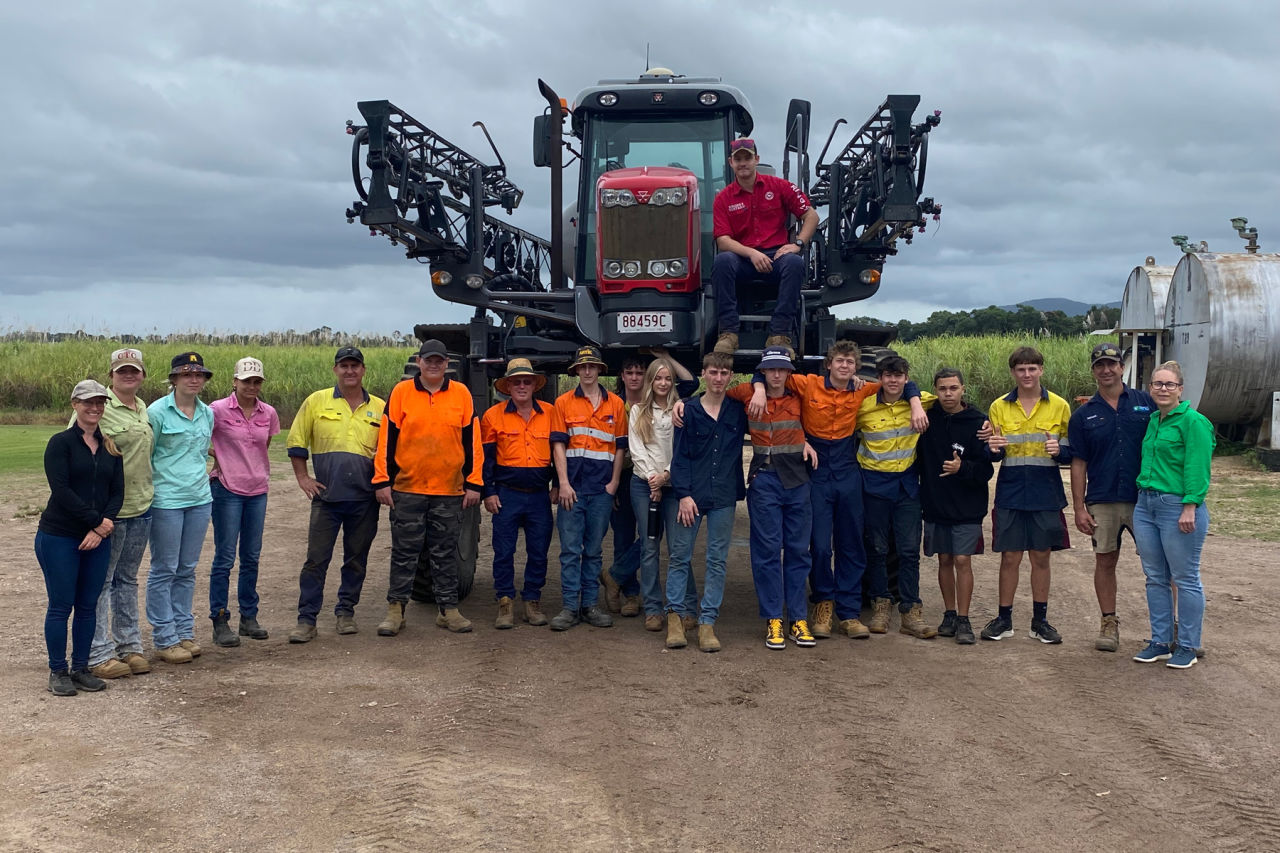
Students from Ingham State High School met with delivery providers for an agricultural workshop highlighting the impacts and threats to our local waterways Carola Bradshaw (far left). Credit: Canegrowers Herbert River
Herbert Cane Productivity Services Limited’s (HCPSL) Project CaNE provides growers support to develop a whole-of-farm nutrient CaNE PlanTM based on Sugar Research Australia's SIX EASY STEPS best management practice for nutrient management, an easy-to-use paper-based nutrient management and record keeping tool that is reef regulation compliant and can be used towards BMP (Best Management Practice) accreditation.
HCPSL extension agronomist and project coordinator for Project CaNE Adam Royle said that trust is key to working with growers and it takes time to build relationships.
“We work closely with several partners associated with Project CaNE including the Department of Agriculture & Fisheries and TropWater to convey their messages to growers. Building those relationships and trust is the only way you can get that information to flow both ways, so it is critical,” said Mr Royle.
In partnership with HCPSL, Project Catalyst helps to improve the environmental health of the regional waterways by working together to help sustain water quality and water flow for the health and management of our rivers and creeks. Project Catalyst’s Practice Change and Grower Support Program supports growers to adopt farming practice changes using a full-scale nutrient management plan.
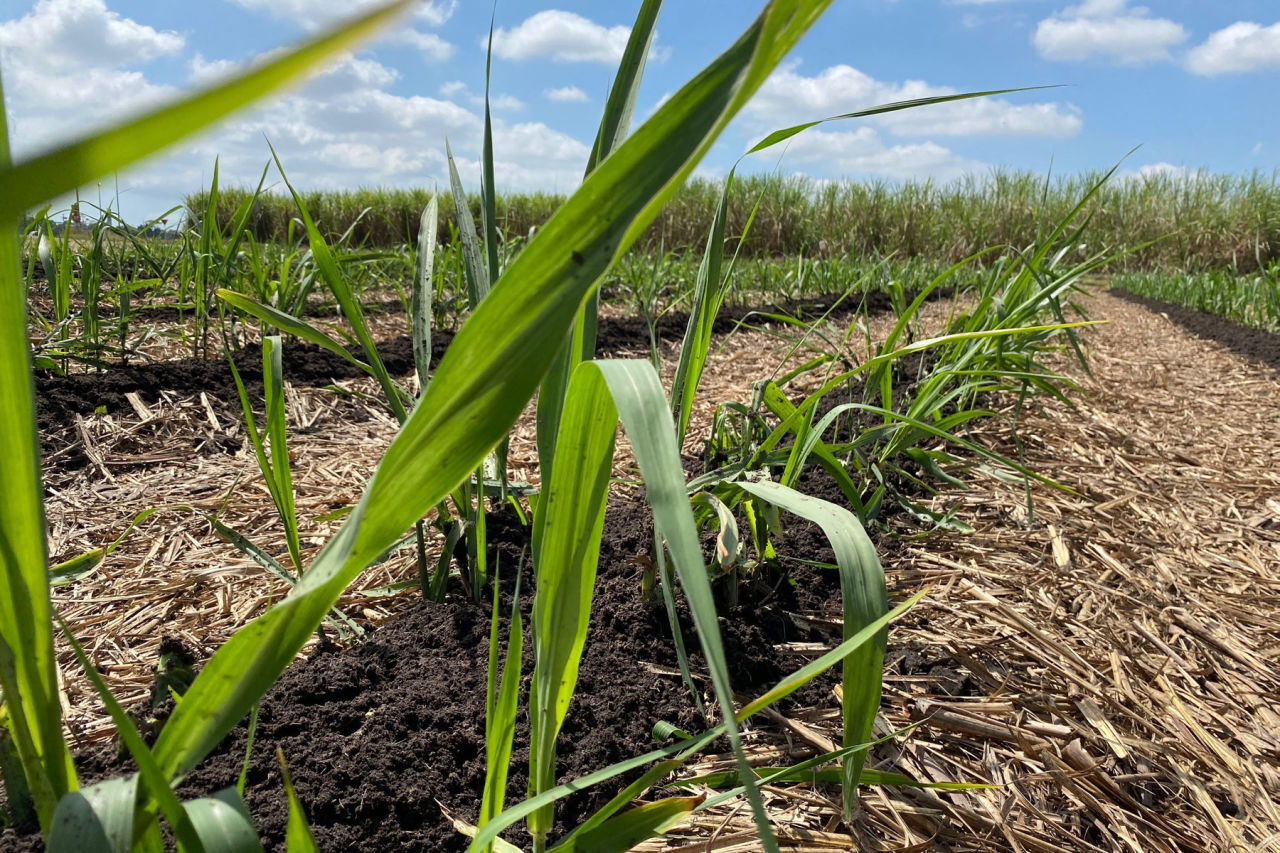
Precision application of mill mud. Credit: Agro Group
Extension Agronomist Bethany Donker said she interacts with growers involved in Project Catalyst on a regular basis in both a pre-emptive and responsive capacity.
“On-farm, over the phone or via email I’m always interacting with growers and working ahead of time to determine strategies ahead of the season as much as possible but we’re also adjusting things as the season goes on like grower practices,” said Ms Donker.
Herbert growers have taken the opportunity to be involved in the LHWQP and its projects resulting in improved water quality and productivity. The LHWQP is on track to prevent 140 tonnes of dissolved inorganic nitrogen from entering the Great Barrier Reef lagoon from the Herbert River catchment each year.
On a program level, the biggest win has been bringing together local organisations and delivery providers to work towards a common goal which is to ultimately improve the profitability, productivity, and sustainability of the sugar industry.
Top photo: Extension Agronomist Bethany Donker said she interacts with growers involved in Project Catalyst on a regular basis in both a pre-emptive and responsive capacity. Credit: HCPSL
#Related
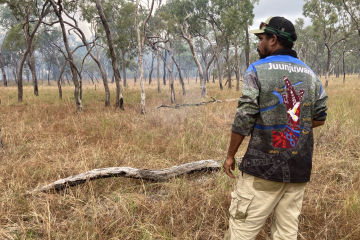
Project News ·
Community at the forefront of Reef water quality protection

Project News ·


